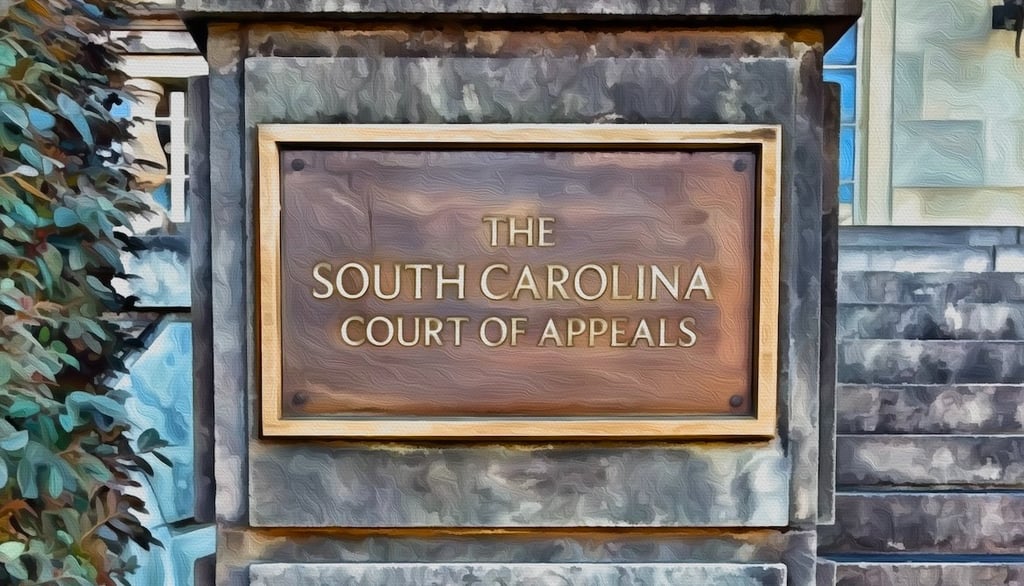
Basics of Appellate Procedure
Appellate procedure isn’t complicated, but it is technical. Here’s a 30,000-foot overview.
10/15/20244 min read


The appellate process in South Carolina is straight forward, but most lawyers are unfamiliar with it. That’s because the overwhelming majority of legal disputes settle. Only a tiny fraction of cases go to trial. And only a portion of that tiny fraction go up on appeal. In a sense, cases that make it to appeal represent the most contentious legal disputes. Both sides have dug in their heels and committed to fighting the case for many years—sometimes decades.
Many lawyers will go their entire legal careers without ever having any involvement in an appeal. But you might. This post gives you a basic overview of how the appeals process in the South Carolina Court of Appeals works. Appeals to the Supreme Court, Circuit Court, and Administrative Law Court are different in significant respects and won’t be covered here. If you’re a lawyer who doesn’t care to learn more about appeals but somehow you end up involved in one, just call me.
Notice of Appeal
The notice of appeal is the document that starts the appeal process. It’s usually just a sentence or two identifying the trial court order or judgment that's being appealed. The NOA must be served and filed within specified time periods. Service means delivering the NOA to the opposing lawyers or parties. Filing means delivering the NOA to the Court. The deadline for serving the notice of appeal is jurisdictional—a surprisingly confusing concept in the law. Here, it means that this deadline cannot be extended. If you miss it, your appeal is dead.
Obtaining and reviewing the trial record
Once the NOA is served and filed, you need to order the transcript if there is one. You also need to get a hold of any orders, pleadings, or trial exhibits that will be part of the appeal. Best practice is to get this stuff directly from the trial court clerk of court. Every county in SC has their own clerk of court and you may need to physically go there to get some of these things. Appellate judges will not look at anything outside of the trial record. In fact, they won’t look at anything outside the record on appeal which is even more limited than the trial record. It is essential that you review the trial record and get your hands on everything that you need the appellate judges to see.
Initial briefs and designation of matter
After you’ve reviewed the trial record, done your legal research, and decided which issues you’re going to argue on appeal, you need to submit your initial brief and what’s known as the designation of matter to be included in the record on appeal. As I said above, appellate judges will not look beyond the record on appeal when deciding your case. Your designation of matter must include anything that is necessary for them to review the merits of your arguments. But remember, you can only designate things that were before the trial judge. You cannot include evidence that was not presented to the trial judge.
Record on appeal and final briefs
After both sides have submitted their initial briefs and designations, the appellant must compile the record on appeal. That means taking everything designated by each party and arranging it in a single pdf document with a detailed table of contents. You’ll Bates number the ROA and split it into 500-page (double sided if printed) volumes. Keep in mind, some exhibits you’ll want to designate cannot be put in pdf format, e.g., videos. These kinds of exhibits should be included in your ROA index but will need to be physically transported from the trial court to the Court of Appeals via transport order.
Once the ROA is finalized, the final briefs can be prepared. The final briefs are identical to the initial briefs except the citations to the lower court record are changed to reflect the page numbers in the ROA, as opposed to the page numbers in the transcript or exhibit numbers, etc.
Oral argument
Only about 1 in 10 appeals gets scheduled for oral argument in the SCCOA. So, something like 90% of appeals in South Carolina are decided on the briefs and the record on appeal. That’s why your writing and preparation of a clean, complete record is absolutely essential. If your case gets scheduled for argument, you’ll only have 10-15 minutes to speak directly to the judges. Use your time there wisely.
Decision
Once the case is argued, or if no oral argument is scheduled, the appeal will be submitted to the Court to rule. Most cases in the Court of Appeals take about three years from notice of appeal to decision. As in most areas of the law, patience is key. Make sure your client understands this on the front end. If they aren’t willing to wait, they aren’t willing to appeal.
Conclusion
Hopefully this gives you a slightly better understanding of how a case makes it from NOA to Opinion in the SCCOA. If you’re a trial lawyer, having a basic understanding of the appellate process will help you advise your client on whether appealing makes sense for them. And if you get involved in appeal that you need a hand with, call me.

Disclaimer: The information on this website is for general information purposes only. Nothing on this site should be taken as legal advice for any individual case or situation. This information is not intended to create, and receipt or viewing does not constitute, an attorney-client relationship.
